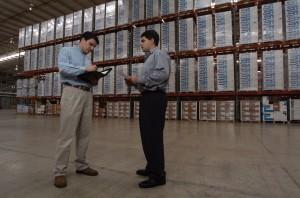
Consider these helpful hints to guide your decision.
Whatever your business or industry, sooner or later the time will come when you’ll need to supplement your regular workforce with a Flexible Labor Workforce (FLW). Maybe it’s because of a seasonal uptick in volume. Or, maybe a temporary promotion is driving demand and you need to flex up your supply chain to keep pace.
Whatever the reason, a contingent workforce can be the perfect alternative to directly hiring labor, especially when the goal is to reduce costs, mitigate risk and drive agility.
The Flexible Labor Workforce, Defined
In today’s business market, where the focus is on cost control and satisfying consumer demand for faster, better service, it’s not surprising that Flexible Labor Workforces are growing in popularity.
Consider this: according to the Bureau of Labor Statistics, four out of five employers in businesses of all types and sizes use some form of nontraditional staffing. In 1983, temporary workers comprised just over half a percent of all employment. By 2012, that number reached 2.3 percent.
Once you determine that flexible labor is right for you, it’s important to understand the different options available. As with all things, provisional labor comes in different flavors:
- Temporary workers: available through temp agencies, usually entry-level employees
- Contract labor: provides on-demand access to specific types of workers with experience/expertise in a specific area
- Temp-to-perm: workers hired on a temporary basis with an opportunity to evaluate them for a potential fulltime position
- Part-time: workers who are unemployed or underemployed
- Seasonal labor: temporary workers like college students, farmers, domestic workers
Top 3 questions to determine which type of flexible workforce is right for you.
Considering a Flexible Labor Workforce but not sure which type you need? To get started, ask yourself:
- What is my immediate labor requirement?
- Would the job be considered skilled or unskilled work?
- How long do I need the workforce – for a short or extended period of time?
Armed with the answers, you’re on your way to determining the type of flexible labor you need. You can further guide your decision by understanding what you’re looking for.
Written by Patrick Floyd, Senior Director of CPG, Ryder Supply Chain Solutions
Patrick Floyd is Senior Director for the Consumer Packaged Goods (CPG) Vertical within the Supply Chain Solutions division for Ryder System, Inc. Mr. Floyd has 25 years of operational experience within 3PL Distribution, Transportation and Contract Manufacturing and Packaging.

